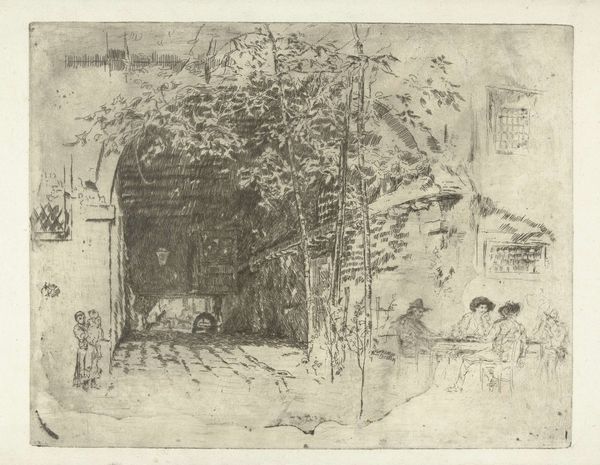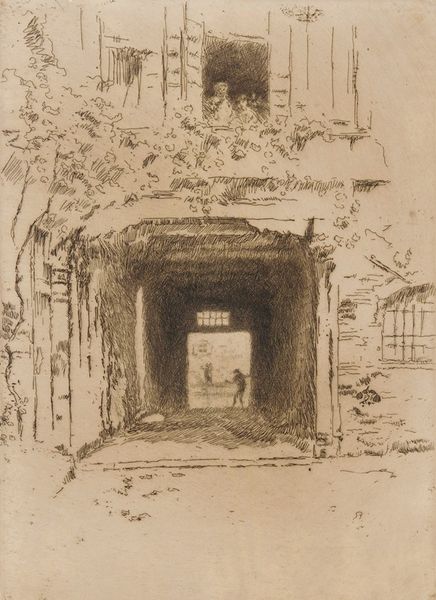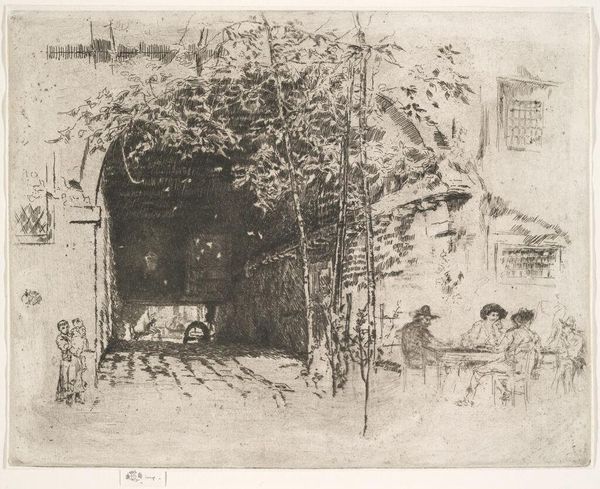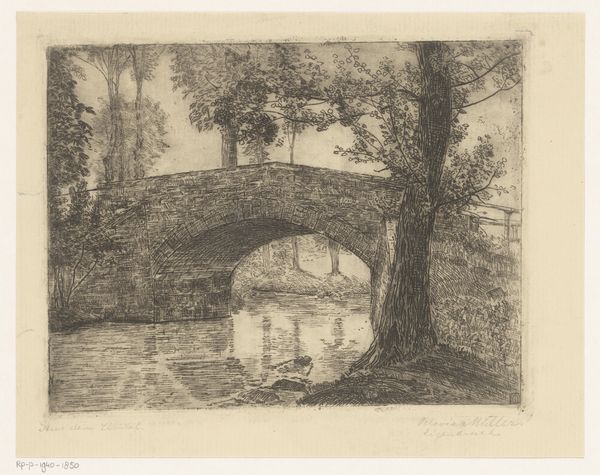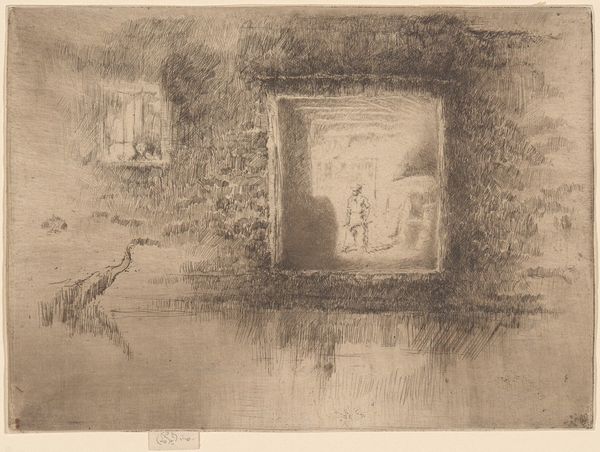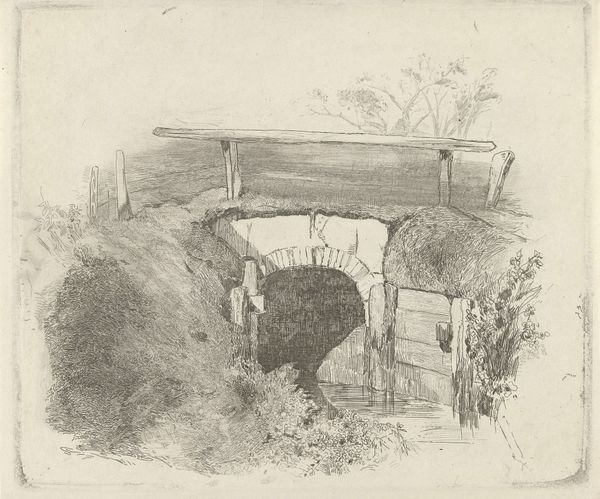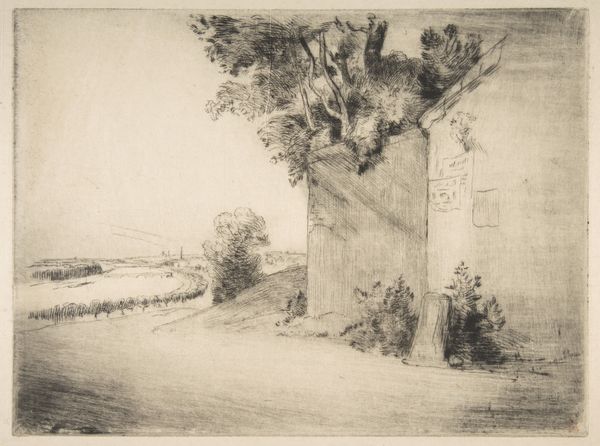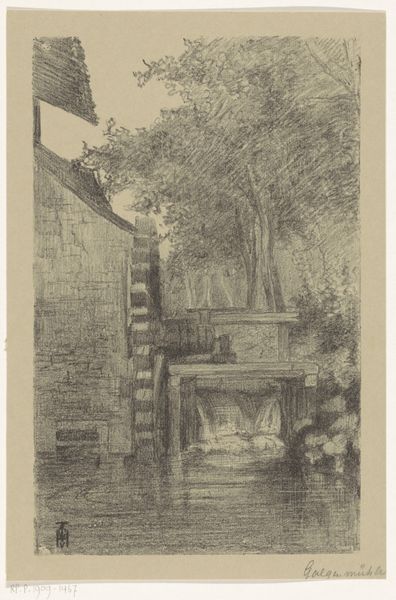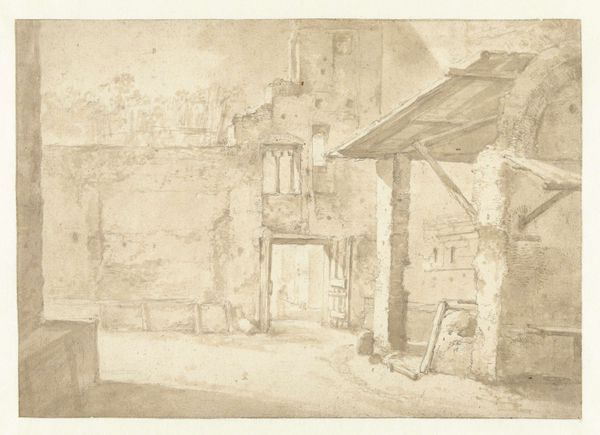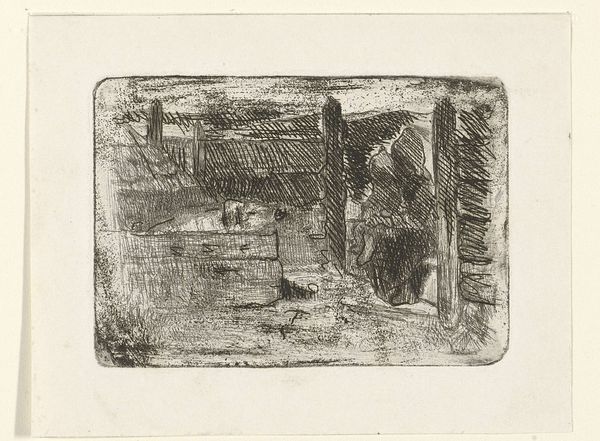
drawing, etching, charcoal
#
drawing
#
impressionism
#
etching
#
landscape
#
charcoal drawing
#
charcoal
Copyright: Public Domain: Artvee
Curator: We're looking at "Traghetto," an etching and drypoint work on paper executed by James Abbott McNeill Whistler circa 1879-1880. Editor: Immediately, I'm struck by the fragility of it. The subtle lines, almost imperceptible in places, give it this ethereal quality. Curator: Yes, Whistler was a master of line, and the tonal variations he achieves through the etching process are quite sophisticated. Observe how he uses a minimum of strokes to suggest form and space. It really pushes the boundary of representation. Editor: I'm curious about his choice of medium. Etching, with its dependence on acid and labor-intensive plate preparation, suggests a slower, more deliberate process. Does this method somehow amplify the everyday? Make it monumental through craft? Curator: Perhaps. He was deeply interested in the Japanese aesthetic, valuing suggestion and atmosphere over precise detail. The limited palette concentrates our focus. The archway and sparse vegetation frame a receding interior and the composition invites us to wander through layers of visual interest. Editor: But beyond the surface treatment, aren't we also seeing something about the Venetian trades? The loading or unloading of passengers at a simple ferry crossing – a distinctly labor-centered narrative, quietly told? Curator: It's true that Whistler often depicted scenes of labor and everyday life. But he's less concerned with the specific narratives, and more focused on creating an aesthetic experience— an arrangement of lines, shapes, and tones, almost abstract. Editor: Still, the "materiality" speaks of a specific time and location doesn't it? These images, generated with laborious techniques are themselves historical documents about late 19th-century Venetian society. Curator: He transforms a banal scene into something truly timeless with masterful economy, revealing an almost ghostly quality. It's about how the visible world can be reduced to its essential visual components and rendered art. Editor: Whistler's "Traghetto," isn't just a study in pure aesthetics. It highlights the intimate connection between art making, material conditions, and social experience. Food for thought. Curator: Precisely, it's an etching that transcends its subject, inviting us into an entirely contemplative viewing.
Comments
No comments
Be the first to comment and join the conversation on the ultimate creative platform.
